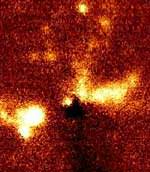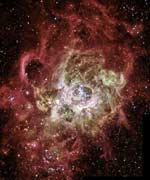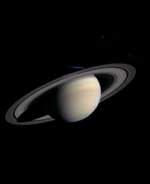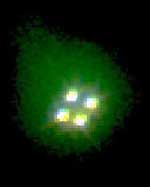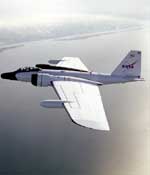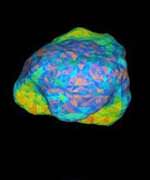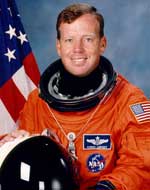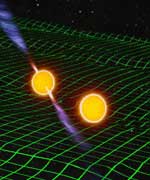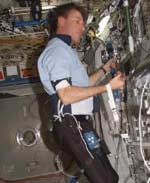
Image credit: NASA
NASA astronaut Michael Foale beat the current US record for endurance in space today when he surpassed 230 cumulative days – a record set by Carl Walz back in June 2002. Foale has been a member of six space shuttle crews and two space station crews. One of his longest times in orbit was when he served as a flight engineer aboard the Mir space station in 1997. Russian cosmonaut Sergei Avdeyev holds the record with 748 cumulative days in space, and Valery Polyakov’s 438-day mission was the most consecutive days in space. Foale has some catching up to do.
NASA astronaut Michael Foale, International Space Station Expedition 8 Commander and NASA Science Officer, is the new U.S. space endurance record holder, and he’s not finished yet.
Just before 2 p.m. EST Monday, Foale surpassed the previous U.S. record of 230 days, 13 hours, three minutes and 37 seconds. NASA astronaut Carl Walz set the old record in June 2002. By the time Foale returns to Earth next April, he will have accrued 375 cumulative days in space. Walz made an ultra-long-distance phone call from NASA Headquarters in Washington Monday to congratulate Foale on his accomplishment. Walz is still co-holder of the U.S. record for the longest single U.S. spaceflight during Expedition 4. He and NASA astronaut Daniel Bursch spent nearly 196 days aboard the Space Station.
Foale has been a member of six Space Shuttle crews and two Space Station crews. He flew aboard Shuttle missions in 1992, 1993, 1995 and 1999. He flew as a flight engineer aboard the Russian Mir Space Station in 1997, traveling to and from the station aboard the Shuttle. For Expedition 8, Foale traveled to the Station on board a Russian Soyuz spacecraft.
Foale’s Expedition 8 crewmate, Russian cosmonaut and Flight Engineer Alexander Kaleri, is also among the most experienced space travelers. By the end of their mission, Kaleri will have logged 610 days in orbit on four flights, placing him fifth on the all-time space endurance list. Another Russian cosmonaut, Sergei Avdeyev, holds the all-time record for time spent in space, with 748 days accumulated on three flights. Cosmonaut Valery Polyakov set the world single-flight endurance record in 1995, when he completed a 438-day mission.
American Shannon Lucid holds the single flight and cumulative record for time in space by a woman. She had a 188-day flight aboard the Russian Mir Space Station contributing to a cumulative total of 223 days in space on five flights.
Walz’s call to Foale, along with b-roll, will be replayed at noon EST today during the NASA Television Video File. NASA TV is available on AMC-9, transponder 9C, C-Band, located at 85 degrees west longitude. The frequency is 3880.0 MHz. Polarization is vertical, and audio is monaural at 6.80 MHz. For information about NASA TV on the Internet, visit:
Original Source: NASA News Release

